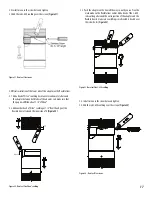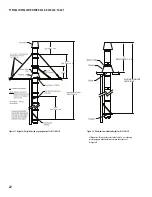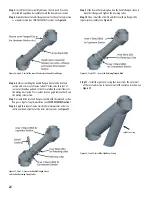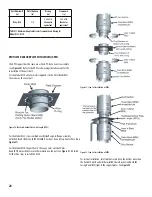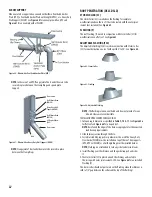
LOCATION OF SUPPORTS (DSLS-DSLD)
Supports can be used in different combinations to secure the chimney in
place. See
Figure 26, 27 and 28
for typical support and guide locations.
VARIABLE LENGTH SUPPORT
To prevent the LV from sagging, it is recommended that the duct
section adjacent to a LV is supported or guided. See
Figure 58
for
typical support locations for Variable Length. When necessary, properly
guide the variable length by installing a Heavy Duty Wall Guide (WGHD) or
any supports immediately below the joint of the next section.
Figure 58: - Typical Installation locations for the Variable Lengths
NOTE:
LV overlapping joints are not intended to support any
weight in the vertical position. The inlet and outlet ends must
each be supported.
TEE SUPPORT
The Tees must be supported properly to protect them from bending. It can
be done by means of Anchor Plate (AP), Anchor Plate with Length (APL)
or Heavy Duty Wall Support (WSHD)
When a tee is used at the base of the riser, the preferred location for sup-
port is above the Tee, thus suspending the Tee. See
Figure 59
A Heavy Duty Wall Support (WSHD), a Ventilated Anchor Plate (APV) or a
Ventilated Anchor Plate with Length (APV)) can be used to support the TEE.
Figure 59: - Suspended Tee Support
NOTE:
In the case of an AP, Flange joint of duct and Tee are to be
secured in place between the Clamp Rings. If it is not possible to
suspend the Tee, it may be supported with a base
(a structural steel stand).
When a Tee is used as a supported Tee, A Drain Tee Cap (DTC) must be
used at the bottom of the Tee for draining
31

